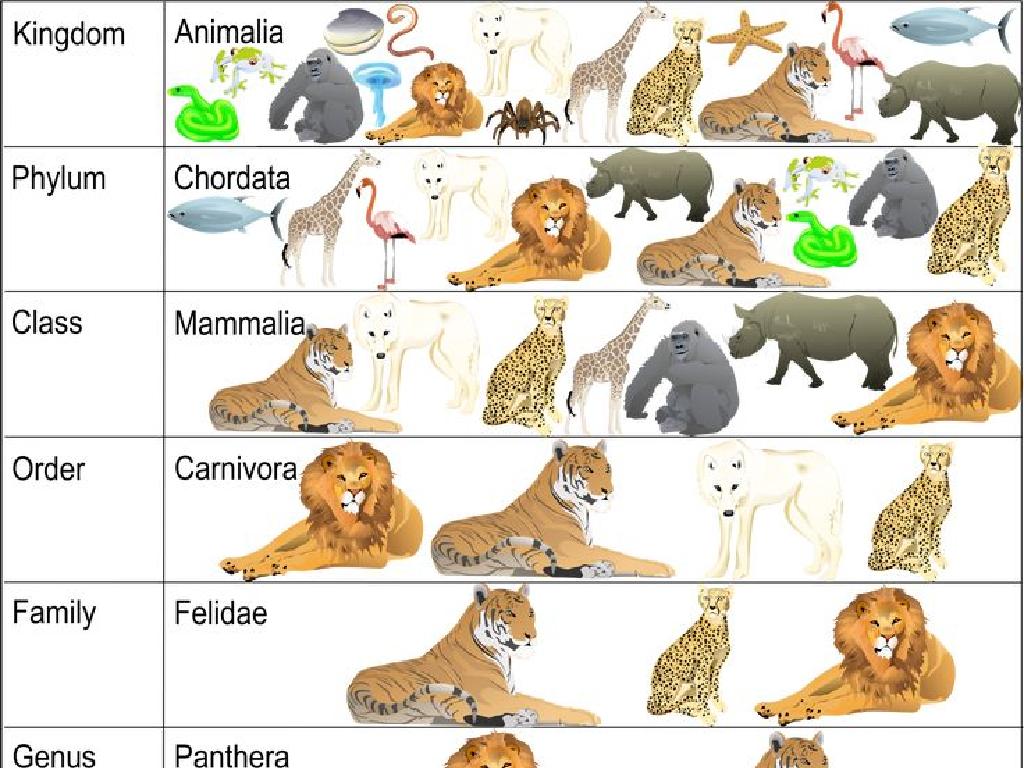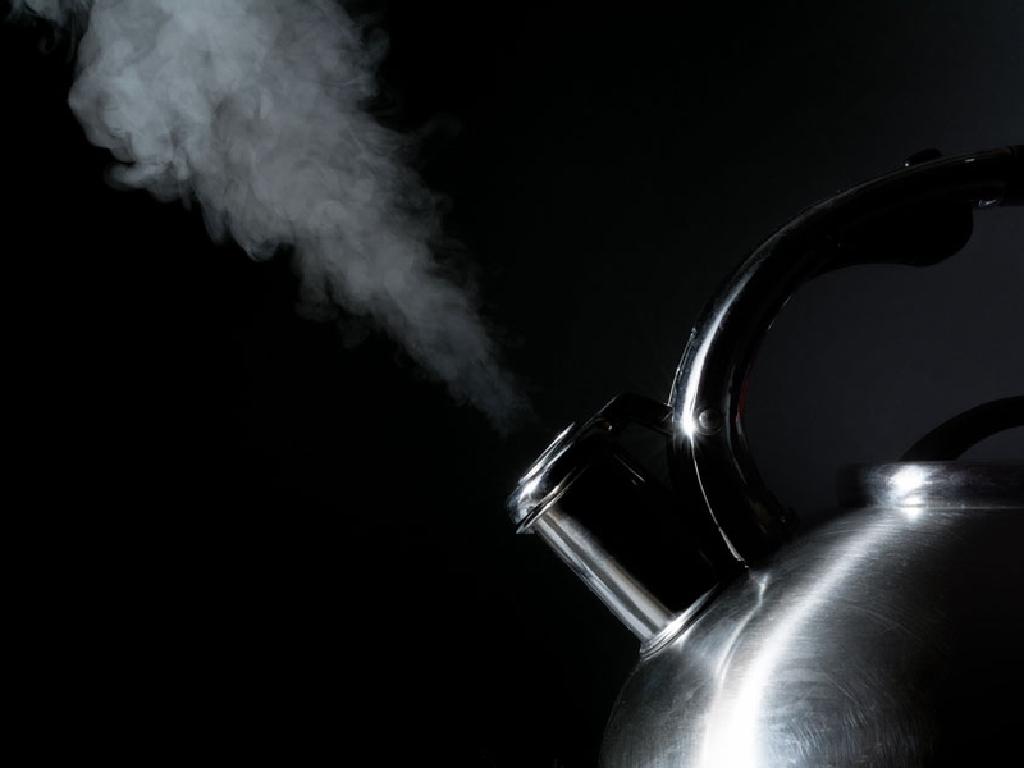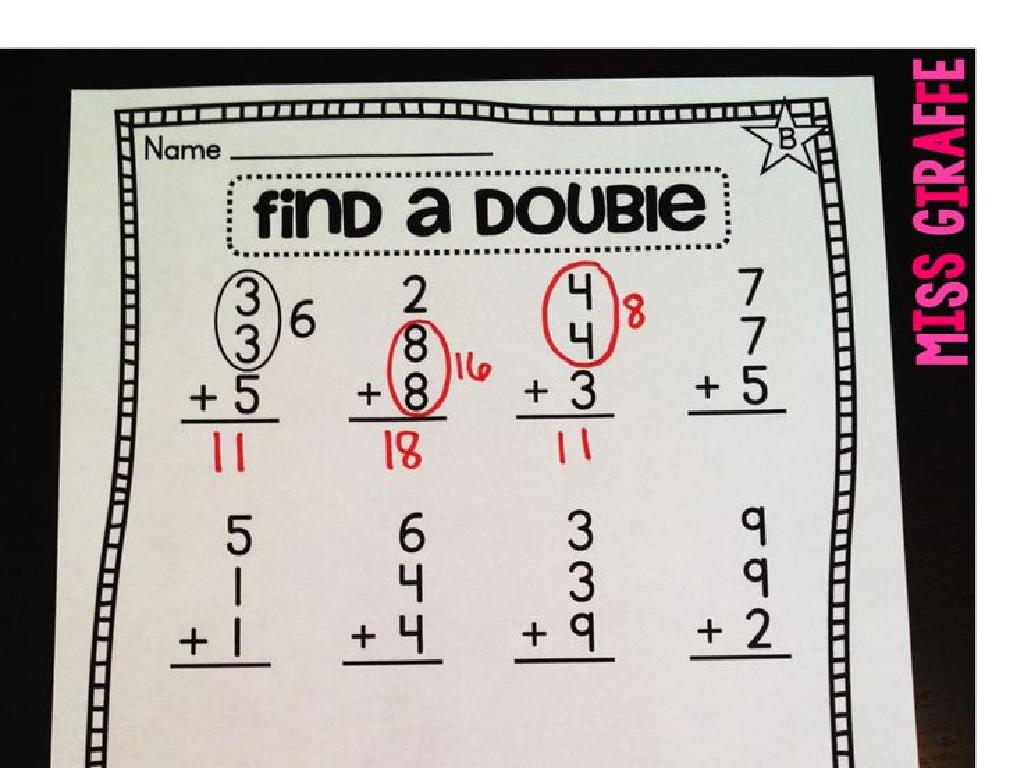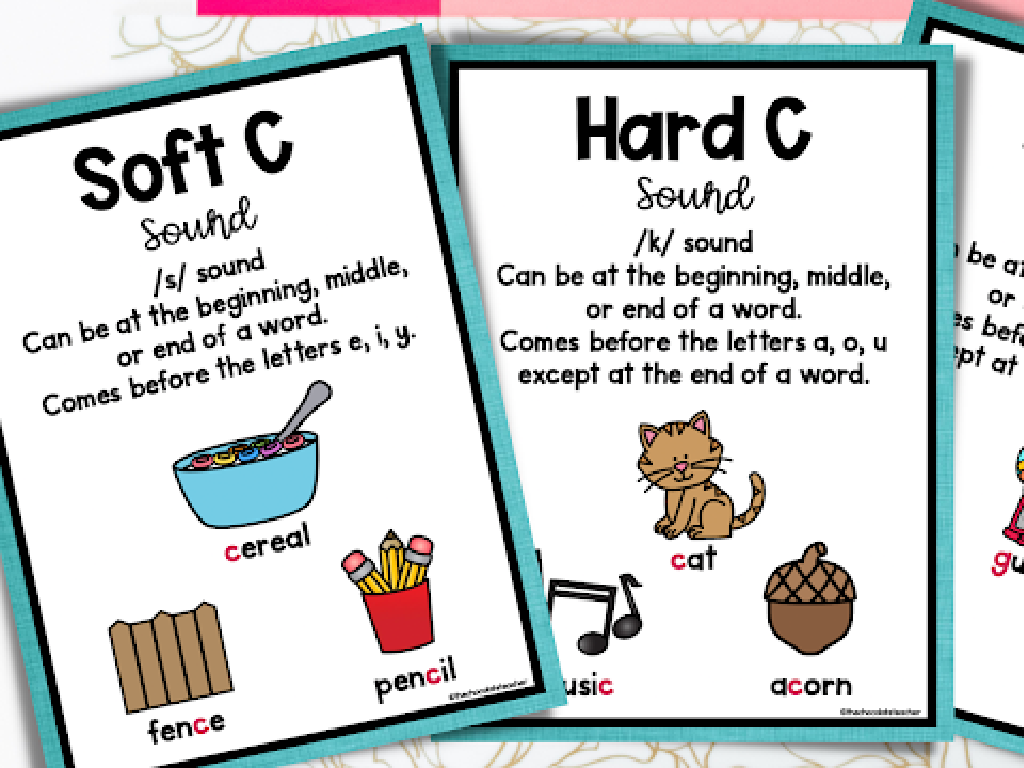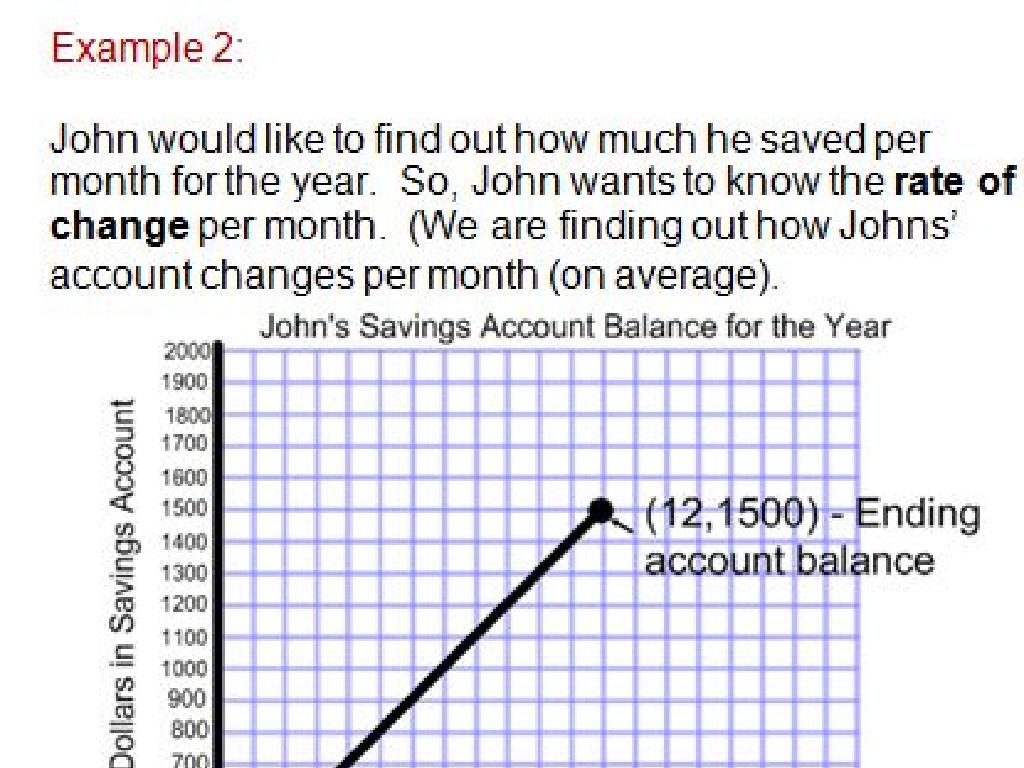Identify Earth'S Water Features
Subject: Social studies
Grade: First grade
Topic: Physical Geography
Please LOG IN to download the presentation. Access is available to registered users only.
View More Content
Exploring Earth’s Water Features
– What are water features?
– Types of water features
– Oceans, rivers, lakes, and ponds
– Water is essential for life
– We drink water, and plants/animals need it too
– Caring for our water
|
This slide introduces first graders to the concept of Earth’s water features as part of their Physical Geography class. Begin by explaining what water features are, including any body of water such as oceans, rivers, lakes, and ponds. Emphasize the importance of water to all life forms, highlighting that humans, plants, and animals all need water to survive. Discuss how we use water in our daily lives and why it’s important to keep our water clean for everyone to use. Encourage the students to think about ways they interact with water every day and how they can help take care of Earth’s water sources.
Exploring Earth’s Water Features
– What is Physical Geography?
– Earth’s natural features
– Earth’s surface includes land and water
– Water features are part of geography
– Lakes, rivers, oceans are water features
– Examples: Rivers and oceans
– Rivers flow, oceans are vast water bodies
|
This slide introduces first graders to the concept of Physical Geography with a focus on Earth’s water features. Physical Geography is the branch of geography dealing with natural features and processes. It’s important to explain that it includes everything from landforms like mountains to bodies of water like rivers and oceans. Use simple language and real-world examples that children can relate to, such as comparing rivers they may have seen to the vastness of oceans they might know from pictures or videos. Encourage students to think about different bodies of water they are familiar with and discuss these as a class.
Exploring Earth’s Water Features
– Earth is mostly water!
– Oceans, rivers, and lakes
– Oceans are vast and salty, rivers flow across land, lakes are large water bodies
– Let’s learn about each one
– Understanding our planet’s water
– Water is important for all life on Earth, and each feature has its own role
|
This slide introduces first graders to the concept that most of our planet is covered with water. Emphasize the vastness of the oceans, the flow of rivers, and the stillness of lakes. Use simple language and relatable examples, such as comparing oceans to a huge swimming pool that covers most of the Earth, rivers like streams of water that can start small but grow big, and lakes as large water areas where people might go fishing or swimming. Explain that these water features are important because they help plants, animals, and people live. Encourage the children to think about water they have seen in their own lives and how it might be similar to or different from these features.
Exploring Earth’s Oceans
– Oceans are huge saltwater areas
– Like a giant salty lake that goes on and on!
– Oceans cover most of Earth
– More than two-thirds of our planet is ocean
– There are five big oceans
– Pacific, Atlantic, Indian, Southern, Arctic
– Oceans are important for Earth
|
This slide introduces first graders to the concept of oceans as vast bodies of saltwater that cover a majority of Earth’s surface. Emphasize the size and scale of oceans by comparing them to something familiar, like a giant swimming pool that never ends. Highlight that there are five distinct oceans, each with its own name. It’s also a good opportunity to touch on the importance of oceans for Earth’s climate, weather, and as a home for many animals and plants. Use a globe or a map to point out the oceans if possible. Encourage the children to think about the animals that live in the ocean and the different types of water they encounter in their daily lives (e.g., fresh vs. saltwater).
Exploring Rivers: Earth’s Waterways
– Rivers are long, flowing water
– Freshwater moving across the land
– They start high and flow down
– They begin in mountains or hills
– Rivers flow into oceans or lakes
– Like a water road to a bigger water body
– Some rivers join other rivers
|
This slide introduces first graders to the concept of rivers as part of Earth’s water features. Explain that rivers are like long water roads that start from high places like mountains and hills and travel down to lower areas. They can end up in various places, including larger bodies of water such as oceans and lakes, or they can meet and join with other rivers. Use simple language and relatable analogies to help students visualize the journey of a river. You can also show pictures or videos of rivers to enhance understanding. Encourage students to think about any rivers they’ve seen or visited and share their experiences.
Exploring Lakes
– Lakes are water surrounded by land
– Imagine a big puddle where animals can live and you can play near
– Lakes vary in size and stillness
– Some lakes are as big as a city, others are just a park-sized spot of water
– Glaciers can create lakes
– When glaciers melt, they leave behind big bowls that fill with water
– Rivers can form lakes too
– Sometimes a river spreads out to make a wide, still area of water
|
This slide introduces lakes as one of Earth’s water features. Explain to students that lakes are large bodies of freshwater surrounded by land, which can be found in various sizes. Some lakes are so large they can look like a sea, while others might be small enough to fit in a park. Discuss how lakes are formed, including by glaciers that carve out basins in the earth that fill with water, or by rivers that expand into a larger body of water. Use simple language and relatable examples to help first graders grasp these concepts. You can also show pictures of lakes to help them visualize. Encourage students to think about any lakes they might have visited and share their experiences.
Let’s Find Water Features!
– Water features on maps
– Maps show us where to find water like oceans, rivers, and lakes.
– Oceans: Earth’s giant pools
– Oceans are huge and cover most of our planet. They’re the big blue parts on a map.
– Rivers: Earth’s wiggly streams
– Rivers look like long, twisty lines on a map. They flow over the land.
– Lakes: Earth’s blue spots
– Lakes are smaller than oceans and can look like blue puddles or spots.
|
This slide is designed to help first graders identify different water features on maps. Start by explaining what a map is and how it represents the land and water on Earth. Show them that the blue parts of a map are where water is found. Explain that oceans are the largest bodies of water and can be identified by their vast size and blue color on the map. Rivers are represented by lines that might twist and turn, and they flow across the land. Lakes are smaller bodies of water that might look like blue spots. Use a colorful map as a visual aid and consider bringing in a globe to help students visualize where these water features are in the world. Encourage the students to share any experiences they have had with different bodies of water.
Water Features Around Us
– Identify local water features
– Rivers and lakes we’ve seen
– Think of a river or lake you’ve visited
– Importance of water features
– They provide homes and food for creatures
– Water features help Earth’s life
– They are used for drinking, farming, and fun!
|
This slide aims to introduce first graders to the concept of water features in their local environment. Start by asking students to think of any bodies of water they know that are close to where they live or places they have visited, such as rivers, lakes, or even the ocean. Explain that these water features are very important as they support various forms of life, including animals, plants, and humans. Discuss how these water features are used by living organisms for habitat, food, and by humans for activities like drinking, agriculture, and recreation. Encourage the students to share their experiences and interactions with local water features to make the lesson more engaging and relatable.
Class Activity: Create Your Own Water Feature!
– Be a young geographer today
– Build rivers and lakes with materials
– Using sand for land, rocks for edges, and water to fill
– Give your water features names
– Invent stories about your creations
– Maybe ‘Whispering River’ or ‘Mirror Lake’? What happens there?
|
This activity is designed to engage students with hands-on learning and to stimulate their creativity. Provide each student with a tray filled with sand to represent land. They can use rocks to create the boundaries of their water features and pour water to form rivers and lakes. Encourage them to think about the characteristics of their water features and come up with unique names. Ask them to create a story about their feature, which could involve animals that live there, people visiting, or a historical event. This will help them understand the importance of water features in geography and storytelling. Possible variations of the activity could include creating different types of water bodies, such as oceans, bays, or ponds, and using additional materials like plants or small figures to enhance their stories.

